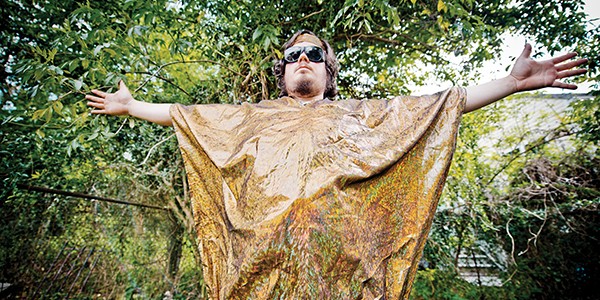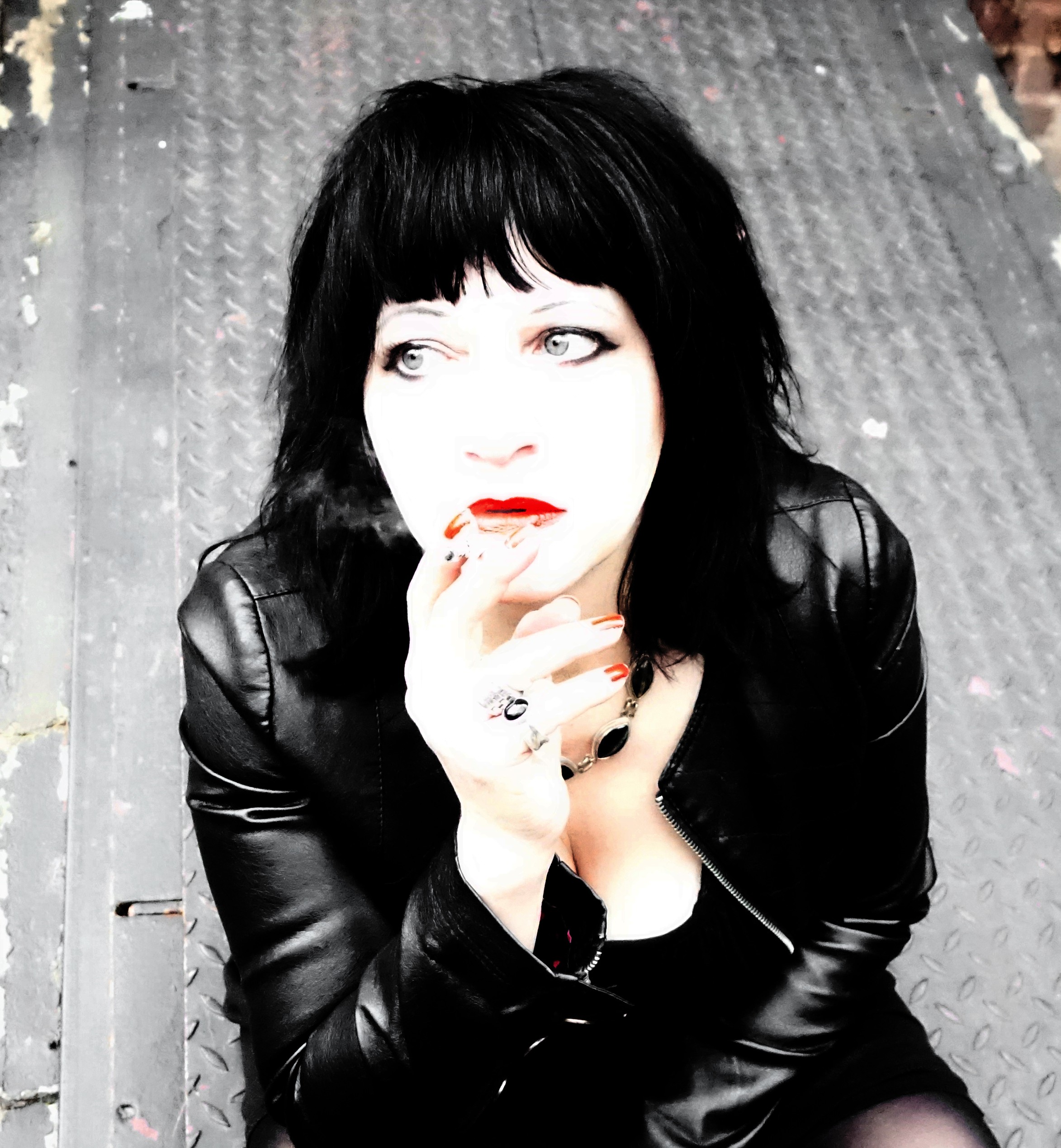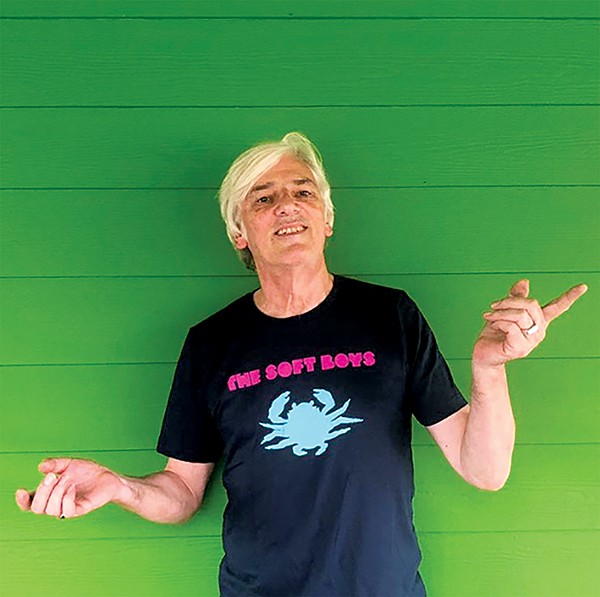
A week ago, the man in the chainmail and shimmering cape would have been broiling in the Memphis heat, but rain swept in on cooler winds, and the first night of Gonerfest 15 is just cool enough for the assembled punks, rockers, and music fans to break out their denim jackets — or, in some cases, chainmail.
The emcee takes the Hi-Tone stage just after 9 p.m., wearing sunglasses and leather, and says a few kind words about Chris Beck, Goner’s “Muddy Spear,” who recently passed away from brain cancer. Members of the crowd shouted that they wished Beck could be there, displaying a communal spirit central to the festival.
Music fans come from the world over for Gonerfest, and there always seems to be a happy reunion happening in the parking lot or by the bathrooms. Then the emcee kicks off the night’s festivities, introducing the “King of the Gras,” who “tours in a cage on wheels … just take it — Bênní!” Then the man in the chainmail hood smiles and steps onstage and up to a stack of keyboards and synthesizers. And he conjures magic.
 Allison Green
Allison Green
BÊNNÍ, master of analog synths
Bênní’s set is dark and hypnotic, but there’s a touch of humor in his deadpan stage patter delivery as he sets up each synthesized swirl of sound. He speaks (and sings) into a talk box, explaining that the diamond man character was a vision that haunted him until he put it in a song: “This is who I am — a diamond man.”
The New Orleans-based musician plays an instrumental song in 6/8 time. It sounds at once sinister and rising, like an old-school video game theme played on a church organ at the bottom of a well. “I haven’t played that one in a while,” Bênní says casually. His delivery is wry, as if to nudge the audience and say, “You know we’re just getting started, right?”
Between sets, the garage-rock true believers slip outside to smoke cigarettes or scarf down barbecue from a smoker pulled behind an RV. Cincinnati-based Bummer’s Eve take the stage after a quick turnover, summoning the crowds with violently strummed guitar. The band is raucous and bopping, fuzzed-out punk. They crash into a noise breakdown, a wall of feedback and distortion, before plunging seamlessly back into the rhythm of the song. Where Bênní’s set pulsed, Bummer’s Eve shakes and rattles. Their set seemed to end far too soon.
The Hi Tone, already crowded for opening sets on a Thursday night, swells with the addition of late arrivals. There is a constant sense of rising energy throughout the night, a shared knowledge that this is only the first night of the festival. Conversations buzz and grow louder as the ever-growing mounds of beer cans in the trash continue to rise, and people fight to be heard over each other and the ringing in their ears. People dance and bop, and Memphis-based Aquarian Blood and Tampa party-rockers Gino & the Goons continue to escalate the energy. Aquarian Blood wails, frenetically running chromatic scales up their fret boards, urging the party to a wilder pitch.

Aquarian Blood
Aquarian Blood build a bomb, and Gino & the Goons light the fuse. They’re party punk, solid songs punctuated by grunts of “ooh!” and “uh!” The Florida-based band plays on as the singer shouts from onstage, “You’re not dancing, we’re not stopping!” Then the rhythm changes, and the singer rips into a chorus of “hip-hip-hypnotic” before everything crashes to a stop with a squall of feedback. Lydia Lunch Retrovirus is up next.
Lydia Lunch, backed by a band so tight they seem telepathic, is the penultimate performer on the opening night of Gonerfest. Dressed in black and laughing, she warns the crowd of her band’s “nasty,” “raunchy” ways. Her guitarist strikes a deft balance between crunchy, palm-muted riffs and wild, dissonant squeals of noise. The rhythm section is locked in, propelling the performance forward through moments of angry, brittle complexity and explosive breakdowns. Red and green lights seem to drip from the Hi Tone sign above the stage. Lunch’s voice floats above it all, singing, screaming, and crooning. Local singer and multi-instrumentalist Luke White leans in to shout in my ear, “She’s pretty badass” before admiring the guitar and bass tones.
 Jasmine Hirst
Jasmine Hirst
Lydia Lunch
White is waiting to go onstage with Harlan T. Bobo, who is closing out night one of the festival. Lunch’s vocals rise, casting a dark spell, while the band pulses with barely restrained energy and she chants, “There’s something witchy in the air.” The music rises to a final crescendo, and Lunch, a master performer, relinquishes the stage with a shouted, “Start the disco!”
Harlan T. Bobo’s set is magnetic, hypnotic. He looks like a man possessed, his eyes going wide as he sings, his smile like Conrad Veidt’s in The Man Who Laughs. He has the strangely compelling charisma of someone who hears holy voices.
His band crafts a dark atmosphere, making them a perfect bookend to Bênní’s darkly filmic opening set, a complement to the eclectic lineup. Frank McLallen’s bass lines are expert, a framework on which to hang the keyboard swells and whine of a slide guitar.
Bobo’s second song is “Human,” the simmering opening track from his new A History of Violence. The song builds to an electric instrumental ending, setting a fevered energy level that the band maintains for several songs, before Bobo pulls out a harmonica and eases up on the gas slightly, giving the captive audience a moment to catch its breath.
It’s the briefest of moments, though, before Bobo starts up a swinging, country-inflected song. It’s an inspired performance, and a fitting end to the opening day of the festival.

 Jasmine Hirst
Jasmine Hirst